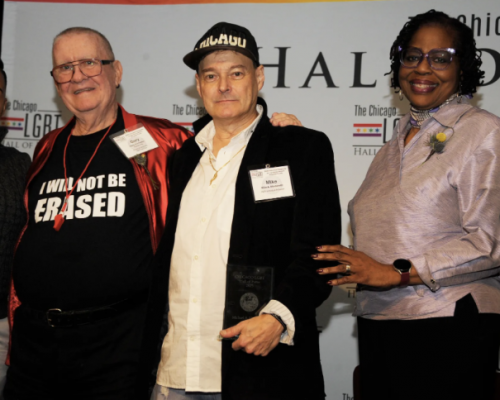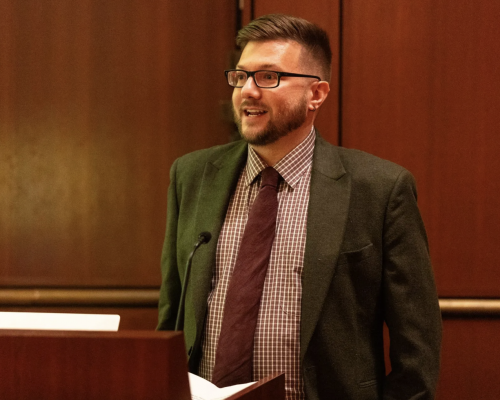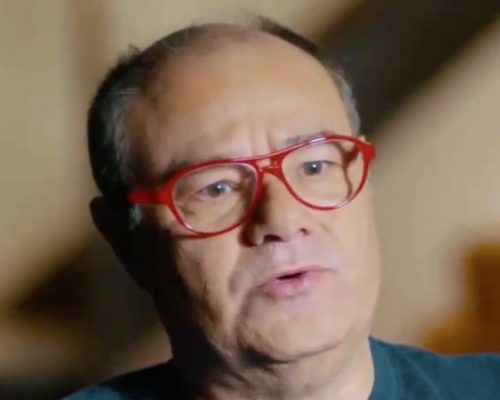by Chuck Colbert
Sean Strub’s poignant and compelling memoir exemplifies storytelling par excellence.
At its heart, “Body Counts” is the telling and remembering of LGBT history, the heroic tales of those on the front lines in the HIV/AIDS epidemic, both the survivors and the fallen — our stories, our history never to be forgotten, trivialized or minimized.
This confessional and historical narrative spans nearly four decades, from the mid-1970s to present day, providing insights into the life (and death) and times of gay men and others on battlefront, at the same time recounting the incredible transformation of the book’s author from a closeted Midwestern Irish Catholic youth from Iowa into a proud and out gay man of Manhattan.
The narrative of “Body Counts” is also about how one gay man made a real difference, creating change through entrepreneurial prowess, progressive politics and savvy street smarts and organizational activism. Doggedly purposeful and personally resourceful, Strub is determined to stay alive and thrive.
As the book so ably demonstrates, there are more than a few ways to count bodies on the battleground of HIV/AIDS. Early on, Strub chronicles ACT UP’s controversial December 1989 disruption of Mass in New York City’s St. Patrick’s Cathedral.
He writes about confronting with the Catholic Church, but not in rage and hatred. Instead, his is a political, if not theological statement of heartfelt grief.
In receiving the Eucharist, for example, instead of repeating the traditional, “The body of Christ,” Strub responds, “May the Lord bless the man I love, who died a year ago this week.”
He continues, “With my heart pounding, I walked to my pew. My mind fixed on bodies, not just the body of Christ. I think of Michael’s body and the agonizing brain infection that turned his last days into a kind of crucifixion. I think of the bodies of protestors carried out on stretchers and those chanting outside, many struggling to survive. I think of my own body, wondering how much longer it will last.”
Gracing the cover of “Body Counts” is a photo of Strub kissing his late partner, Michael Misove.
Near the end of “Body Counts,” Strub writes about his sex abuse, not by Catholic priests, but by one man at a Wisconsin-based Jesuit boarding school, a senior faculty member; the other abuser is an usher at his home parish in Iowa City.
“These men were imbued with the Church’s unassailable authority,” writes Strub.
Taking aim at the faith of his birth, he continues, “It was Catholicism that taught me to hate homosexuality and fear and repress desire. This self hatred separated me from my body and made me ashamed of it.”
In all, shame, stigma and abuse took its toll on his body, even his heart, mind and soul. However, triumphantly, in “Body Counts,” Strub connects the dots “between the sexual abuse and Catholicism’s psychological torment as a child, and the unhealthy relationships, sexual behaviors, and promiscuity I’d engaged in as an adult. I don’t disclaim responsibility, but I now believe that the sexual and psychological abuse I suffered as a child laid the groundwork for the behaviors I engaged in as an adult and led to acquiring HIV. If gay men as a whole had less shame and self-hatred imposed on them by society when they were children, I wonder if we might have been more moderate in our sexual behaviors as adults when we finally found communities of our own where we could escape society’s torment and be with each other.”
If “combination protease therapy in 1996” arrested HIV in his body, Strub writes, “full recovery” resulted from “the process of self-examination” that enabled him “to understand and reconcile the sexual abuse … I suffered as a child.”
And yet for all of Catholicism’s anti-gay messaging, Strub recalls one of its overarching, uplifting themes — that meaning in life is found in contemplation, penance and service.
“Of these three,” writes Strub, “My only real talent is in service.”
“I have campaigned for one cause or another since elementary school, and I expect to do the same for the rest of my life,” he writes. “When I die, I still want to die as a fighter.”
All said and done, “Body Counts” is a beautifully believable, powerful tale of the resurrection of the body — for everybody.
SIDEBAR: REVIEW
Volume 15
Issue 10






